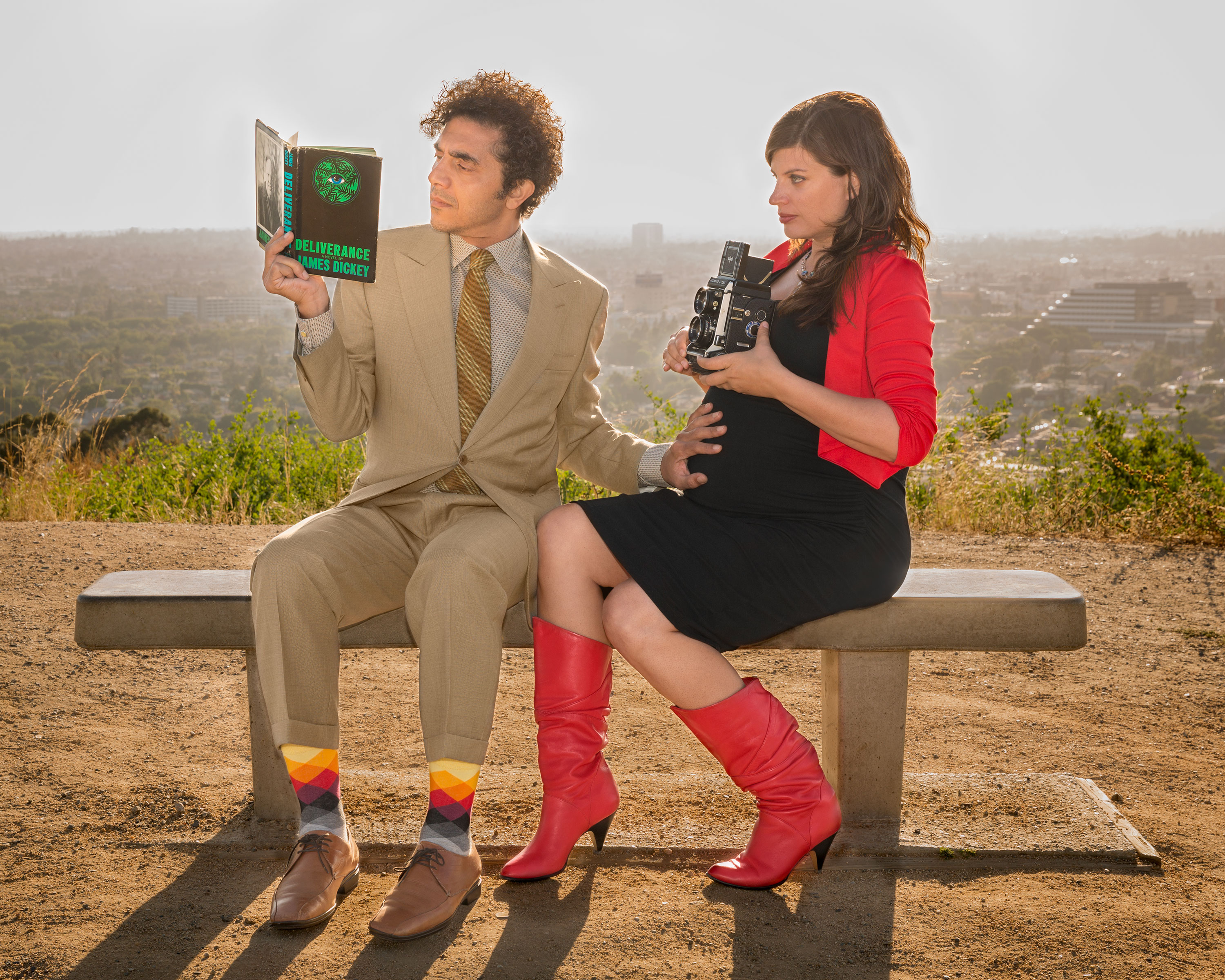La La Land (2016): The Male Lead should have been Latino
 06-15-2017 | tagged
06-15-2017 | tagged  Damien Chazelle,
Damien Chazelle,  Emma Stone,
Emma Stone,  John Legend,
John Legend,  La La Land,
La La Land,  Latin jazz,
Latin jazz,  Los Angeles,
Los Angeles,  Ryan Gosling,
Ryan Gosling,  jazz |
jazz |  Post a Comment |
Post a Comment |  Email Article |
Email Article | Disneyland is presented as imaginary in order to make us believe that the rest is real, when in fact all of Los Angeles and the America surrounding it are no longer real, but of the order of the hyperreal and of simulation. It is no longer a question of a false representation of reality (ideology), but of concealing the fact that the real is no longer real, and thus of saving the reality principle…
Moreover, Disneyland is not the only one. Enchanted Village, Magic Mountain, Marine World: Los Angeles is encircled by these "imaginary stations" which feed reality, reality-energy, to a town whose mystery is precisely that it is nothing more than a network of endless, unreal circulation: a town of fabulous proportions, but without space or dimensions. As much as electrical and nuclear power stations, as much as film studios, this town, which is nothing more than an immense script and a perpetual motion picture, needs this old imaginary made up of childhood signals and faked phantasms for its sympathetic nervous system.
Jean Baudrillard, Simulacra and Simulation[1]
I love Los Angeles, where I lived while I was writing the screenplay of Lolita. I had never seen jacaranda trees before, at least in bloom.
Vladimir Nabokov[2]
 Amanda and I at the open-air screening of La La Land in a park by Chinatown
Amanda and I at the open-air screening of La La Land in a park by Chinatown
A couple of months ago, my spouse and I attended an open-air screening of La La Land in a public Los Angeles park. The weather was, as often it is in LA, perfect. Amidst hundreds, we turned our heads to the blow-up screen, gigantic and absurd, looking like a swimming pool mattress turned onto its side. To its left and in the distance could be glimpsed the Downtown LA skyline, and here we were watching a celebrated celebration of LA. It should have been perfect, because the occasion was synchronous as to be supremely hyper-real. Only it wasn’t.
Weeks later, I attended a formal luncheon at my university where I was seated next to a veteran of American film and TV with decades of experience as actor, writer, and producer behind him. Critical and incisive, I enjoyed hearing his recollections and grievances. At some point as several of us chatted he qualified La La Land as his favorite film of late. It really captured the glory of the classical Hollywood musical he declared, before making a far more original observation: It was mature and true to life that the film made the failure of the protagonists’ romance a condition of the amelioration. He singled out the moment near the finale when a couple of years after parting ways the two leads exchange a glance of endearment and acknowledgment at a chance meeting wherein they exchange no words, before parting ways again, perhaps for good.
He was right, which is one reason I didn’t offer my observations, including those critical. Another reason is that the autumnal pro was present to be appreciated and I’d been told that my face is over-expressive. The film was lovely, in a way that a fresh and familiar passion piece of art is, the way few films are, especially for somebody who had come to know LA through films only to then come to learn that life in LA was akin to a film.
Romance aside, La La Land is far from perfect. It doesn’t serve a musical to serve its best number first. More substantively, the film adopts a regressive view of jazz, not merely a nostalgic one. It deliberately makes the “progressive” jazz numbers lousy, as performed by real-life marvel composer-musician-singer John Legend (Keith), a black man, whereas it adoringly punctuates its traditional numbers written and played by its Romantic, idealistic white hero of jazz Sebastian. Therein lies the film’s lost opportunity—in writing and in casting. I apprehend and critically appreciate the imperatives of casting in commercial cinema, but Ryan Gosling was miscast. Though I have not read any reviews of this film, I did read in the lead-up to the Oscars ceremony that awards observers were not surprised that he had not been nominated for best actor as his co-star Emma Stone had been. (She would go on to win.) Gosling is one of the good guys in Hollywood—earnest, genuine and nice. Many have reported this publicly, but I have also personally heard it from somebody who has worked with him intimately. Despite his talent as actor and his credibility in the piano playing scenes, Gosling, unlike Stone, does not sing or dance well and he is a decade too old for the role I reckon.
More problematic than the casting, however, is the writing of Gosling’s character Seb(astian) as white. Would it not have been refreshing and original for the film that appreciates the city’s past to acknowledge the city’s Chicano heritage, by casting a Latino in the lead? The Hispanic/Latino population of Los Angeles is larger than that of whites, while its adult residents speak English and Spanish at home by near equal measure.[3] In a city that is brown and browning,[4] in which interracial and interethnic romance is as common as doughnut shops, neither going out of style as far as I can see, would it not have been opportune to have a non-white play Sebastian? Further, a Latino jazz musician would have alerted today’s audiences to the glorious world of Latin jazz. The comradery and competition between Sebastian and black fusion jazz musician Keith would have nodded to the historical, longstanding cultural connection between black and Latino musicians as Latin jazz augmented and aggrandized the jazz that was the jasm.
In a heated exchange between Keith and Sebastian about the moment of jazz., Keith remonstrates, “How you gonna save jazz if no one's listening? “You're holding on to the past, but jazz is about the future.” Much like La La Land, which could have been about the future if it had helped its cause with a Latino male lead, under thirty, boasting a gorgeous voice and glorious moves, while sporting handsome headphones pumping Thelonious Monk, eyes wide and unblinking, decidedly oriented to the future.
 "Deliverance in LA" (photography: Flo Razowsky, production: Amanda Hankerson, art direction: Mohannad Ghawanmeh)
"Deliverance in LA" (photography: Flo Razowsky, production: Amanda Hankerson, art direction: Mohannad Ghawanmeh)
[1] Jean Baudrillard, Simulacra and Simulation (Ann Arbor: University of Michigan Press, 1994) 12-13.
[2] Gerald Clarke, "Checking in With Vladimir Nabokov," Esquire, July 1975, 131.
[3] See under “Demographics” and “Social” statistics indicative statistics based on American Community Survey census of Los Angeles dating to 2015, https://censusreporter.org/profiles/16000US0644000-los-angeles-ca/.
[4] Javier Panzar, “It's official: Latinos now outnumber whites in California,” Los Angeles Times, July 8, 2015, http://www.latimes.com/local/california/la-me-census-latinos-20150708-story.html.
